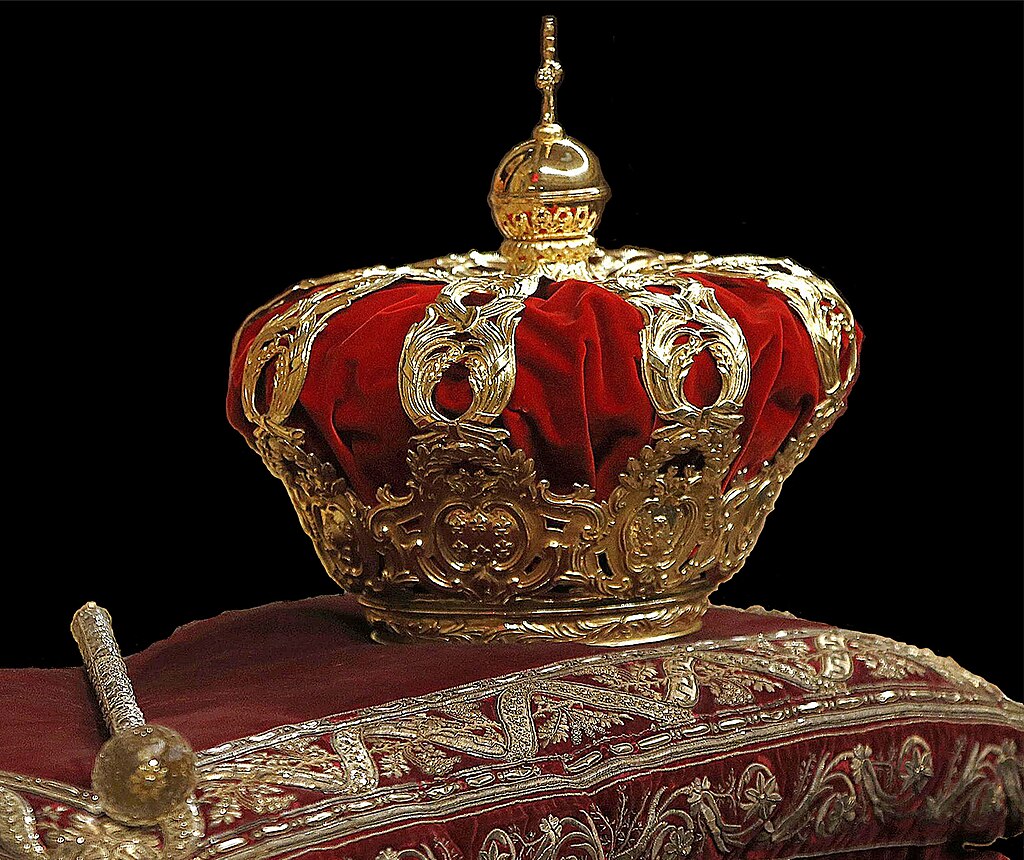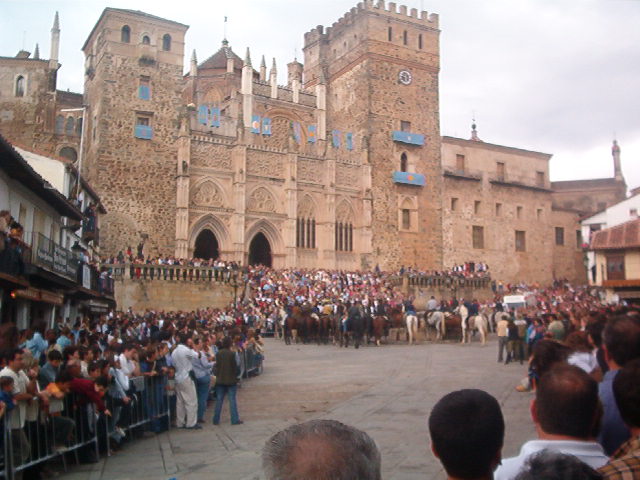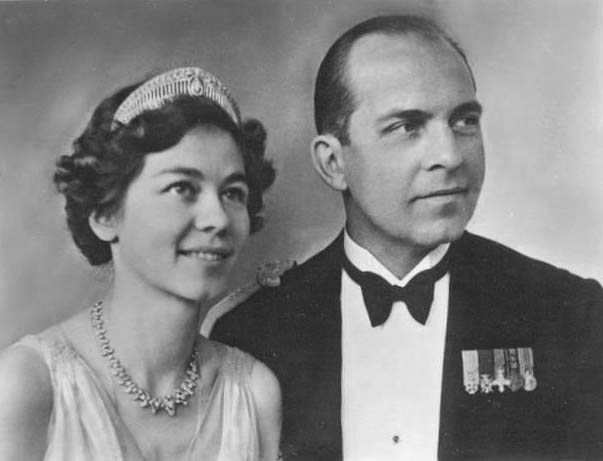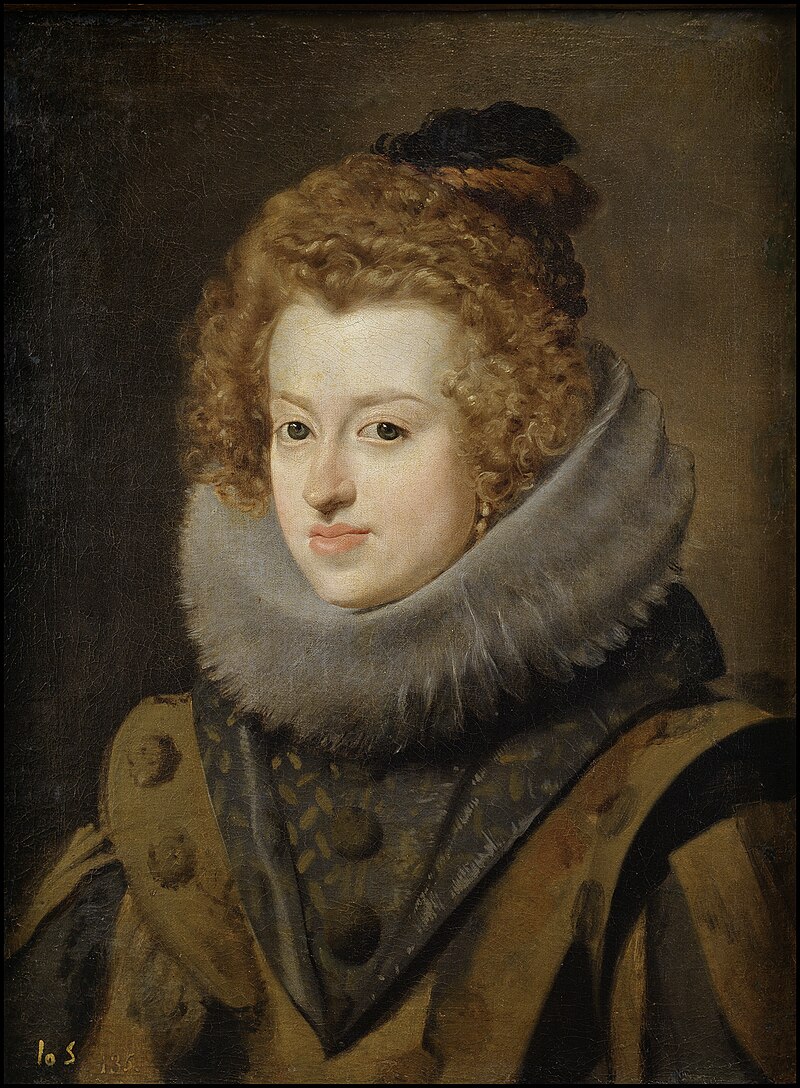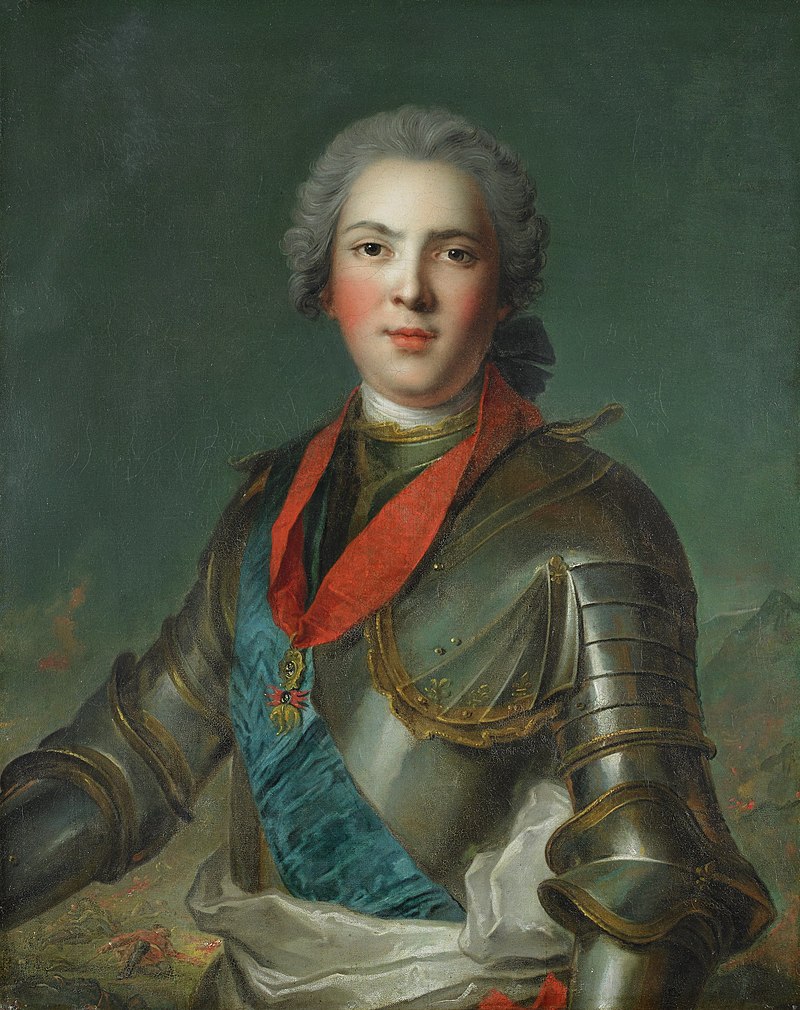by Susan Flantzer
© Unofficial Royalty 2025

King Carlos I, the first King of a unified Kingdom of Spain; Credit – Wikipedia
In the 15th century, the territory Spain currently occupies included the Kingdom of Leon, the Kingdom of Castile, the Kingdom of Aragon, and the Kingdom of Navarre. The marriage in 1469 of King Ferdinand II of Aragon and Queen Isabella I of Castile and León eventually led to a unified Kingdom of Spain.
The current Spanish Royal Family are members of the House of Bourbon. In 1700, the last Spanish king of the House of Habsburg, Carlos II, King of Spain, died childless with no immediate Habsburg heir. He named 16-year-old Philippe of Anjou, Duke of Anjou as his successor. Philippe was the son of Louis, Le Grand Dauphin, the heir apparent to the throne of France, and the grandson of King Louis XIV of France and his wife Maria Theresia, daughter of King Felipe IV of Spain and his first wife Elisabeth of France, daughter of King Henri IV of France. Philippe became the first Bourbon king of Spain, reigning as Felipe V.
- Unofficial Royalty: Kingdom of Spain Index
- Unofficial Royalty: Line of Succession to the Throne of Spain
- Official Page of The Royal Household of His Majesty the King
Spouses and widows and widowers of the Spanish monarch’s sons and daughters, other than those of the Prince or Princess of Asturias, are entitled to the form of address and honors the Spanish monarch may grant them.
The Spanish Monarch

King Felipe VI of Spain; Credit – Wikipedia
The Spanish monarch is styled and titled His Majesty King (Spanish: el Rey) or Her Queen (Spanish: la Reina). His Majesty King Felipe VI of Spain is the current King of Spain. On June 2, 2014, King Juan Carlos I of Spain, Felipe’s father, announced his intention to abdicate the throne in favor of his son. On June 18, 2014, King Juan Carlos signed the formal instrument of abdication, and Felipe ascended the throne at midnight. King Felipe VI was sworn in and proclaimed as king on June 19, 2014, in a ceremony in the Congress of Deputies, the lower house of the Spanish legislature.
The Spanish constitution limits the line of succession to the successors of King Juan Carlos I. The constitution states that if all the lines designated by law become extinct, the Cortes Generales, the Spanish legislature, shall provide for succession to the Crown in the manner most suitable for the interests of Spain.
Currently, Spain uses male-preference primogeniture, meaning that a son comes before a daughter, regardless of age. It has been proposed that the laws be changed to allow for equal primogeniture in the future, although no changes to the Constitution have been made. Members of the Spanish royal family must have the consent of the monarch and the Cortes Generales to marry. If they marry without consent, they are removed from the line of succession.
The Spanish Royal Consort

Queen Letizia of Spain; Credit – Wikipedia
The King of Spain’s wife has the title of Queen of Spain with the style Her Majesty. The current royal consort of Spain is Her Majesty Queen Letizia, born Letizia Ortiz Rocasolano in Oviedo, Asturias, Spain. The husband of a reigning Queen is known as Consort to the Queen of Spain and has the title of Prince and is styled His Royal Highness. However, there is no constitutional issue with a future reigning Queen of Spain amending the royal decree and elevating her husband to King Consort with the style His Majesty since there is historical precedent. Francisco, Duke of Cadiz, the husband of Queen Isabella II of Spain (reigned 1833 – 1868) was styled and titled His Majesty King Consort of Spain.
The Heir to the Spanish Throne – The Prince of Asturias or The Princess of Asturias

Leonor, The Princess of Asturias; Credit – Wikipedia
Born Her Royal Highness Infanta Leonor of Spain, the elder of the two daughters of King Felipe VI, is Her Royal Highness The Princess of Asturias, the heir presumptive to the Spanish throne. On June 18, 2014, when Leonor’s grandfather, King Juan Carlos, signed the formal instrument of abdication and her father ascended the throne as King Felipe VI, Leonor automatically became Princess of Asturias.
The Spanish monarch’s heir apparent or heir presumptive holds the title Prince of Asturias or Princess of Asturias with the style Royal Highness. The title Prince of Asturias originated in 1388, when King Juan I of Castile granted the title Prince of Asturias and the rights to the territory of Asturias, now in northwest Spain, to his first-born son, the future King Enrique III of Castile. Prince/Princess of Astrurias was the title of the heir to the throne of the Kingdom of Castile, until King Carlos I, the son of Juana I, Queen of Castile and León and Queen of Aragon, united Castile and León, and Aragon into the Kingdom of Spain. Carlos would reign in Spain as King Carlos I but is better known as Charles V, Holy Roman Emperor. He was one of the most powerful monarchs ever and had a large number of titles due to his vast inheritance of the Spanish realms from his mother and the Burgundian and Austrian realms from his father, Philip of Habsburg, Duke of Burgundy, the ruler of the Burgundian State. King Carlos I’s son, the future King Felipe II of Spain, was the first heir to the Kingdom of Spain to be Prince of Asturias.
Besides the title Prince/Princess of Asturias, the heir apparent or heir presumptive to the Spanish throne also holds other titles:
- Prince/Princess of Girona
- Prince/Princess of Viana
- Duke/Duchess of Montblanc
- Count/Countess of Cervera
- Lord/Lady of Balaguer
Currently, Spain’s succession law is male-preference cognatic primogeniture. This means that Leonor, as the elder of King Felipe VI’s two daughters, is first in line to inherit the throne, and she is the heir presumptive. However, if her parents have a son, which is very unlikely at this point, he would be the heir apparent and Leonor would forfeit the title of Princess of Asturias and the other titles to her brother. There have been discussions of changing the succession law to absolute primogeniture, where the eldest child, regardless of gender, inherits the throne, but no legislation has been forthcoming. If Leonor ascends to the throne, she will be Spain’s first queen regnant since Queen Isabella II, who reigned from 1833 to 1868.
Infante and Infanta of Spain
Infanta Sofia of Spain, younger daughter of King Felipe VI of Spain
Unlike other European monarchies, in Spain, only the heir to the throne is a Prince or Princess. The other children of the Spanish monarch and the children of the Prince of Asturias or the Princess of Asturias hold the title of Infante of Spain (male) or Infanta of Spain (female) and the style Royal Highness.
The Spanish monarch may grant the title of Infante or Infanta with the style of Highness by Royal Decree. For instance, in 1994, King Juan Carlos of Spain created his second cousin Carlos de Borbón, Duke of Calabria (1938 – 2015), then the pretender to the throne of the Kingdom of the Two Sicilies, an Infante of Spain as the “representative of a line linked historically to the Spanish Crown”.
Royal Grandees
Felipe Froilán de Marichalar y Borbón, son of Infanta Elena of Spain
The Grandee of Spain is the highest rank of the Spanish nobility. In precedence, a Grandee of Spain is ranked immediately after the Prince or Princess of Asturias and the Infantes/Infantas of Spain. In addition to the hereditary nobility, the children of Infantes and Infantas are also Grandees of Spain. They bear the style of The Most Excellent and the rank but not the title of Royal Grandee of Spain. The style and rank are not hereditary or transmissible. The most current Royal Grandees of Spain are the children of King Juan Carlos’ two daughters, Infanta Elena and Infanta Cristina.
This article is the intellectual property of Unofficial Royalty and is NOT TO BE COPIED, EDITED, OR POSTED IN ANY FORM ON ANOTHER WEBSITE under any circumstances. It is permissible to use a link that directs to Unofficial Royalty.
Works Cited
- Colaboradores de los proyectos Wikimedia. (2005). Familia formada por el rey de España, su consorte, hijos y padres. Wikipedia.org; Wikimedia Foundation, Inc. https://es.wikipedia.org/wiki/Familia_real_espa%C3%B1ola
- Flantzer, Susan. (2014). King Felipe VI of Spain. Unofficial Royalty. https://www.unofficialroyalty.com/king-felipe-vi-of-spain/
- List of Titles and Honours of Leonor. Princess of Asturias. (2025). Wikipedia.org. https://en.wikipedia.org/wiki/List_of_titles_and_honours_of_Leonor
- Royal House of His Majesty The King – Inglés – home. (n.d.). www.casareal.es. https://www.casareal.es/EN/Paginas/home.aspx
- Spanish Royal Family. (2024). Wikipedia. https://en.wikipedia.org/wiki/Spanish_royal_family
- Título del Heredero del Trono de España. (2004). Wikipedia.org; Wikimedia Foundation, Inc. https://es.wikipedia.org/wiki/Pr%C3%ADncipe_de_Asturias
- Título nobiliario en España. (2005). Wikipedia.org; Wikimedia Foundation, Inc. https://es.wikipedia.org/wiki/Grandeza_de_Espa%C3%B1a
- Título que se otorga en España a los hijos del rey y del príncipe heredero. (2008). Wikipedia.org; Wikimedia Foundation, Inc. https://es.wikipedia.org/wiki/Infante_de_Espa%C3%B1a
- Wikipedia Contributors. (2024, October 21). Infante of Spain. Wikipedia; Wikimedia Foundation.
- Wikipedia Contributors. (2025). List of Current Grandees of Spain. Wikipedia; Wikimedia Foundation.
- Wikipedia Contributors. (2024). Succession to the Spanish throne. Wikipedia; Wikimedia Foundation. https://en.wikipedia.org/wiki/Succession_to_the_Spanish_throne










